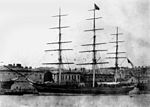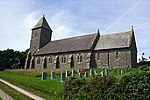RAF Hope Cove
Royal Air Force Hope Cove or more simply RAF Hope Cove is a former Royal Air Force radar station. It is located about 1 mile (1.6 km) south west of Salcombe on the south Devon coast, England, co-located with the former RAF Bolt Head airstrip, which was the RAF closed in 1945 but remains in service for general aviation to this day. Hope Cove was originally built in 1941 to host an AMES Type 7 ground control interception (GCI) station. In the 1950s it joined the ROTOR network and was upgraded with an AMES Type 80 radar. It was one of six Type 80 stations that featured a R6 bunker, which was semi-sunken. When the GCI role was moved to the new Master Radar Stations, the bunker was made redundant and taken over by the Home Office as a regional seat of government (RSG) bunker. Plans to move this station to Norton Manor Camp were never carried out, and it remained in use as a RSG (although the name change on occasion) until 1994 with the ending of the Cold War. The bunker is currently a Grade II Listed Building.
Excerpt from the Wikipedia article RAF Hope Cove (License: CC BY-SA 3.0, Authors).RAF Hope Cove
Coombe Hill, South Hams Malborough
Geographical coordinates (GPS) Address Nearby Places Show on map
Geographical coordinates (GPS)
| Latitude | Longitude |
|---|---|
| N 50.224898 ° | E -3.79846 ° |
Address
Coombe Hill
TQ7 3DW South Hams, Malborough
England, United Kingdom
Open on Google Maps









